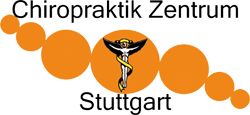What conditions does the Chiroprakitk Zentrum Stuttgart treat?
We care for patients of all ages, with a variety of health conditions. We are especially well known for our expertise in caring for patients with back pain, neck pain and headaches. Particularly with our highly skilled manipulations or chiropractic adjustments. We also care for patients with a wide range of injuries and dysfunctions of the musculoskeletal system, involving the muscles, ligaments and joints. These painful conditions often involve the nervous system, which can cause referred pain and dysfunction distant to the region of injury. We also counsel patients on diet, nutrition, exercise, healthy habits, and occupational and lifestyle modification.
Is chiropractic treatment safe?
Chiropractic is widely accepted as one of the safest drug-free, non-invasive therapies available for the treatment of neuromusculoskeletal complaints. Although chiropractic has an excellent safety record, no health treatment is completely free of potential adverse effects. The risks associated with chiropractic, however, are very small. Many patients feel decrease in symptoms following chiropractic treatment, but some may experience mild discomfort and aching just as they do after some forms of exercise. Current literature shows that minor discomfort or soreness following spinal manipulation typically fades within 24 hours.
Neck pain and some types of headaches are treated through precise cervical adjustment. Cervical adjustment works to improve joint mobility in the neck, restoring range of motion and reducing muscle spasm, which helps relieve pressure and tension. A neck adjustment is a remarkably safe procedure. While some reports have associated upper high-velocity neck manipulation with a certain kind of stroke, or vertebral artery injury, evidence suggests that this type of arterial injury often takes place spontaneously, or following everyday activities such as turning the head while driving, swimming, or having a shampoo in a hair salon. Patients with this condition may experience neck pain, dizziness and headache that leads them to seek professional care—often at the office of a doctor of chiropractic or family physician—but that care is not the cause of the injury. The best evidence indicates that the incidence of artery injuries associated with high-velocity upper neck manipulation is extremely rare – about 1 case in about 5.85 million manipulations.
If you visit the Chiropraktik Zentrum Stuttgart with upper-neck pain or headache, be very specific about your symptoms. This will help your doctor of chiropractic offer the safest and most effective treatment, even if it involves referral to another health care provider.
What type of education and training do chiropractors have?
Doctors of chiropracticare educated as primary-contact health care providers, with an emphasis on diagnosis and treatment of conditions related to the musculoskeletal system (the muscles, ligaments and joints of the spine and extremities) and the nerves that supply them. Educational requirements for doctors of chiropractic are among the most stringent of any of the health care professions.
Once accepted into an accredited chiropractic college, the requirements become highly demanding — four to five academic years of professional study are the standard. Doctors of chiropractic are educated in orthopedics, neurology, physiology, human anatomy, clinical diagnosis including laboratory procedures, diagnostic imaging, exercise, nutrition rehabilitation and more.
Because chiropractic care includes highly skilled manipulation/adjusting techniques, a significant portion of time is spent in clinical technique training to master these important manipulative procedures.
In total, the chiropractic college curriculum includes a minimum of 4,200 hours of classroom, laboratory and clinical experience. The course of study is approved by an accrediting agency that is fully recognized by the U.S. Department of Education and governmental bodies of the UK and Canada.
How is a chiropractic adjustment performed?
The Chiropractor typically uses his or her hands to manipulate the joints of the body, particularly the spine, in order to restore or enhance joint function. This often helps resolve joint inflammation and reduces the patient's pain. Chiropractic manipulation is a highly controlled procedure that rarely causes discomfort or harm. The chiropractor adapts the procedure to meet the specific needs of each patient. Patients often note positive changes in their symptoms immediately following treatment.
Is chiropractic treatment ongoing?
The hands-on nature of the chiropractic treatment is essentially what requires patients to visit the chiropractor a number of times. In contrast, a course of treatment from medical doctors often involves a pre-established plan that is conducted at home (i.e. taking a course of antibiotics once a day for a couple of weeks). A chiropractor may provide acute, chronic, and/or preventive care thus making a certain number of visits sometimes necessary. Your Chiropractor should tell you the extent of treatment recommended and how long you can expect it to last.
Why is there a popping sound when a joint is adjusted?
Adjustment (or manipulation) of a joint may result in the release of a gas bubble between the joints, which makes a popping sound. The same thing occurs when you “crack” your knuckles. The noise is caused by the change of pressure within the joint, which results in gas bubbles being released.
